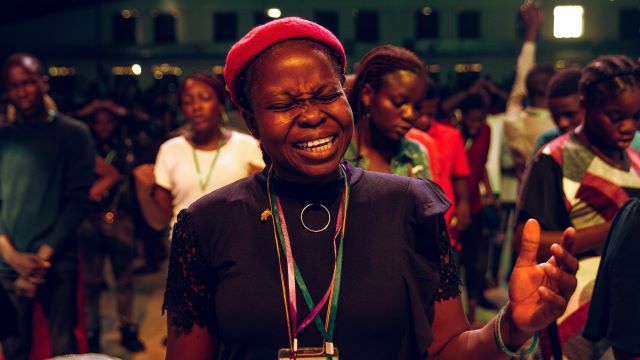BANGUI, Central African Republic — The first notes come quietly: a low thump of the drum, a ripple of balafon keys. In the Boy-Rabe district, dusk settles over ochre earth, and a walled courtyard fills with the cadence of bare feet meeting ground. Dancers, shoulders rolling and hips swaying in wide arcs, move in time with the beat. Laughter weaves through the chorus of voices, and what begins as performance soon dissolves into collective motion.
In a nation where a decade of sectarian conflict has left deep fractures, such scenes are more than diversion. Music and dance have become unlikely architects of social cohesion — cultural forces working alongside, and sometimes in place of, formal reconciliation efforts.
“When words fail, rhythm speaks,” said Aristide Bokolé, a griot and dance facilitator in the capital. “Through rhythm, we remember who we are — and each other.”
Across rural villages and urban neighborhoods once split by violence, traditional performance arts have reemerged as bridges across divides. Revived Gbaya, Zande, and Banda dances — once at risk of disappearing — are now central to healing ceremonies, interfaith gatherings, and civic meetings. A 2022 UNESCO report on cultural resilience credits such initiatives with providing “mechanisms of recovery” in the Central African Republic (C.A.R.), helping communities find common ground after years of strife.
Rhythms of Reconciliation
In Bria’s PK3 displacement camp, where Christian and Muslim residents once lived apart, young leaders have introduced Sanza Nights, named after the thumb piano prominent in regional traditions. Participants share dances, folktales, and songs from different heritages, a practice that began cautiously but has grown into an eagerly anticipated gathering.
“Music softened the space,” said Halimatou Djamous, a teacher and event coordinator. “Now people arrive early to help prepare.”
Support has come from cultural diplomacy programs under the United Nations Multidimensional Integrated Stabilization Mission in the Central African Republic (MINUSCA), which funds theater groups and dance troupes to perform in contested regions. Among them, Troupe Zokoué has carried a traditional Banda reconciliation ritual to towns like Kaga-Bandoro and Bambari. The performance tells of two brothers divided by war who ultimately lay down their spears and dance together — a narrative that has moved audiences to tears.
Tradition Meets the Digital Age
The revival is not solely about preservation. In Bangui, younger musicians are merging heritage with global genres, layering mbira melodies over Afrobeats and trap rhythms. Yakaré Musiki, a collective whose 2023 album Ndoye spans five national languages, has drawn international attention for songs that address themes from environmental change to gender equity. Their viral track Balaka Ya Pasi (“Healing Drum”) has become an anthem for youth-led peacebuilding.
“We want to offer a different soundtrack,” said vocalist and songwriter Apollinaire Madi, “one of possibility.”
Earlier this year, the group performed at the African Union’s annual cultural summit in Addis Ababa, where their blend of defiance and hope earned a standing ovation.
Culture as Civic Infrastructure
Local NGOs, including the Bangui-based Voix de la Jeunesse Centrafricaine, now incorporate music and dance into trauma recovery. Group drumming and storytelling circles provide safe ways for war-affected youth to process memories and identity.
“Trauma lives in the body,” explained Noëlle Ngboma, an art therapist and program lead. “Rhythm restores order. It’s not magic, but it’s close.”
In villages like Kouango, elders are reclaiming roles as custodians of oral history through monthly Mboko ceremonies — part song, part debate, part communal decision-making. In regions far from the capital’s reach, these gatherings often function as informal town halls.
A Fragile Revival
Challenges remain. Instruments are frequently handmade or donated; venues are improvised; insecurity can halt rehearsals for weeks. According to a 2024 African Development Bank review, the Ministry of Arts and Culture operates on one of the smallest cultural budgets in the region.
“There is so much potential,” said Bokolé. “But without support, it will fade again — like a song half-sung.”
The Nation’s New Beat
Back in Boy-Rabe, the courtyard grows quiet. The last dancer bows, drawing applause. An older woman raises her hands high, clapping, as a teenager offers her water. A low hum begins, an old tune passed through generations. No one moves to leave.
In a country still marked by the weight of conflict, these moments feel less like echoes of the past than glimpses of a future stitched together by rhythm, memory, and the shared act of moving as one beneath the open night sky.
Sources
- UNESCO. Culture in Crisis: Policy Guide for a Resilient Creative Sector. Paris: UNESCO, 2022.
- African Development Bank. Central African Republic Cultural Sector Review. Abidjan: AfDB, 2024.
- United Nations Multidimensional Integrated Stabilization Mission in the Central African Republic (MINUSCA). Civil Affairs Activity Report, 2023.


